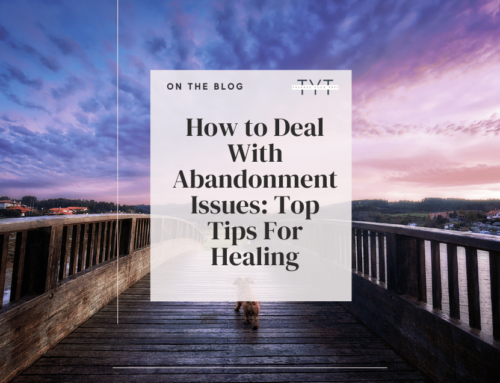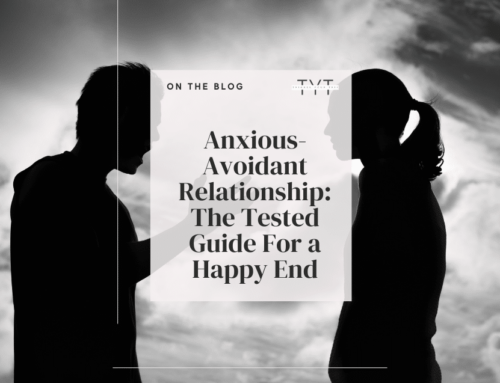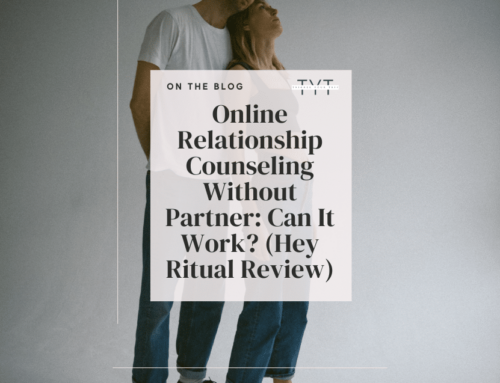In relationships, identifying someone with narcissistic personality disorder can be challenging. A narcissist attracts others by presenting themselves as charismatic and assured, possessing a captivating charm. However, underneath this appealing exterior, there’s a person who is manipulative and self-focused, prioritizing their own needs over their partner’s emotions.
Being in a relationship with such an individual can feel like a draining emotional ride, as they typically shift rapidly from idolizing to devaluing and eventually disregarding their partners.
They’re also skilled at manipulating others for personal gain, subjecting their partners to mental and emotional distress and confusing the victim. This often leaves their victims in self-doubt about their own instincts and decisions.
The stages of a narcissistic relationship can be broken down into the 21 detailed stages below – from the initial idealization phase to the devastating discard.
About The Narcissistic Relationship Pattern
The characteristic pattern in a narcissistic relationship usually starts with the “glorification” stage, where the narcissist bombards their partner with love and praise.
However, this is often followed by an emotionally abusive tactic, the “devaluation” phase, where the partner exhibits criticism, belittling, silent treatment, and blame shifting, leaving the victim feeling confused. Lastly comes the “discard” phase, where the narcissist abruptly ends the relationship or emotionally withdraws. The narcissist’s ego refuses to accept responsibility, degrading their partner’s self-worth through narcissist hooks.
Living through this cycle can severely affect mental health, leading to anxiety, depression, and a damaged sense of self-worth and self-esteem.
Breaking free from this cycle involves recognizing these patterns and understanding that the narcissist’s behavior reflects their insecurities, not their worth. Seeking support from a mental health professional can also be incredibly beneficial.
Related: How to Deal With Abandonment Issues: Top Tips For Healing
What is The Average Length of a Relationship With a Narcissist?
A pattern often seen in narcissistic relationships is an “idealize-devalue-discard” cycle. In a narcissistic relationship, the initial stage involves the narcissist showering affectionately on their partner. However, over time, the narcissist gradually devalues their partner through critical actions, given the silent treatment, and ultimately discarded when they no longer meet the narcissist’s needs. They exploit their partner’s emotional trauma, confusing the other person.
This can make the partner feel perplexed and desperate for the narcissist’s validation. The duration of this narcissist-empath relationship can often vary due to its dependence on various factors.
These factors include the intensity of the narcissistic behavior, the level of self-importance, and the victim’s low self-esteem. If you suspect you’re in a narcissistic relationship, watch for signs of abuse and strategize an exit plan immediately.
Signs like gaslighting and constant criticism are important to look out for. It is also essential to seek professional assistance if there is any sign of such red flags.
Related: How to Deal With Abandonment Issues: Top Tips For Healing
What Are the Signs of a Narcissistic Relationship?
When in a narcissistic relationship, it can be difficult to see the signs of their manipulation and abuse. Some common signs include:
- Gaslighting is a manipulative tactic where a narcissist creates situations to manipulate their partner by making them question their sanity or abilities.
- Constant criticism from your partner.
- Frequent lying or exaggerating to make themselves look better.
- Unrelenting demands for attention and admiration.
- Inability to take responsibility for their actions, instead blaming others or dismissing accountability altogether.
- Taking control of finances or making financial decisions without considering your needs.
- Controlling behavior, like deciding who you can talk to- Isolating you from friends and family
- Making unreasonable demands or requests.
If any of these sound familiar, it’s time to take action. It’s important to remember that you are not alone in this situation. There are resources and support available for victims of narcissistic abuse.
Related: Best Free Covert Narcissist Test: Are You Dealing With a Narcissist?
What Steps Can I Take to Escape a Narcissistic Relationship?
First and foremost, it’s vital to comprehend the dynamics of a narcissistic relationship and its harmful after-effects on the affected party. People with narcissistic personalities frequently display an overblown sense of self-worth, demonstrate a lack of compassion, and employ manipulative methods to sustain dominance in their relationships through the devaluation stage.
Consequently, their partners might endure emotional disregard and manipulation under the narcissist’s control, where the victim negatively influences their self-confidence and overall wellness.
Recognizing the signs of a narcissistic partner can help distinguish between a healthy and an unhealthy relationship. Some of these red flags include excessive grandiose sense of self-importance, persistent criticism, gaslighting, frequent lying to boost their image, constant need for admiration, inability to take responsibility for actions, controlling behavior, and isolation from friends and family.
Elements such as empathy, personal empowerment, and self-love are vital for healing from these kinds of experiences. Empathy enables one to comprehend one’s own feelings and needs, personal empowerment can provide the bravery needed to leave a toxic narcissistic relationship, and self-love helps nurture self-respect and self-esteem, which often get eroded in a relationship with a narcissist.
In addition, incorporating self-help tactics like mindfulness exercises is instrumental in the recovery journey. It allows one to live in the present moment, helping the person heal. Concentrating on the present moment can lessen stress and enhance mood.
Moreover, therapeutic sessions are an extremely beneficial tool offering insights into personal experiences, survival mechanisms, and emotional assistance.
Establishing a secure support system, such as companions, relatives, or support groups, can offer comprehension, guidance, and motivation. Lastly, self-help books around parenting or relationships and online resources focusing on recovery from narcissistic relationships (like this article) can be beneficial.
Online resources, support groups, and self-help books can provide knowledge to empower the victim, giving them the tools to navigate their healing journey. Remember, healing is a journey, and everyone’s path is unique. It takes time, patience, and self-compassion, but one thing is certain – you are worthy and deserve a healthy and fulfilling relationship.
Related: Why Do I Attract Narcissists? 7 Main Reasons & How to Stop it
What Does a Narcissist Do to End a Relationship?
When narcissists conclude the relationship, they might do so suddenly and without considering their partner’s sentiments. Although they have started with the idealization stage, that soon ends with criticizing, belittling, and finally rejecting their partner throughout the narcissistic relationship. Hence, this culminates in an abrupt cessation of communication or distancing themselves from their once cherished “love.”
Even if they initiate the breakup, they are likely to deflect blame onto their partner as a manipulation tactic and do it slowly and painfully. Furthermore, a narcissist may attempt to dictate the manner and timing of the relationship’s end by manipulating the partner’s actions with guilt-inducing tactics, gaslighting, and other forms of emotional maltreatment.
Either the narcissist strives to control their partner into remaining in the relationship or makes it challenging for them to exit by issuing threats, guilt-tripping, or actively causing harm.
Regardless of their methods, individuals with narcissistic tendencies are renowned for their manipulative behavior and frequent reliance on emotional abuse to sustain dominance and power in a narcissistic relationship. Those trapped in such relationships must be aware of the perils of persisting with a narcissist.
Related: 5 Weird Things Covert Narcissists Do & Ways to Protect Yourself
The 21 Stages of a Narcissistic Relationship:
Stage 1: Love bombing
At the start of a narcissistic relationship, a narcissist attempts to shower their partners with gifts, attention, and compliments to gain control. This is known as love bombing.
Stage 2: Idealization
Once they’ve established control, narcissists begin the idealization stage. This is a manipulative tactic where they express excessive admiration and flattery for their partner while expecting the same in return.
Stage 3: Illusion
Creating an illusion of a perfect relationship, the narcissist portrays an image that does not reflect reality.
Stage 4: Devaluation stage
The narcissist starts devaluing their partner, criticizing and belittling them, making them feel unworthy and inadequate.
Stage 5: Gaslighting
The narcissist manipulates their partner’s perception of reality, making them doubt their own thoughts, feelings, and experiences.
Related: Narcissist Gaslighting: 19 Ways to Spot This Dangerous Abuse
Stage 6: Second-guessing
Constantly questioning oneself and doubting one’s own judgment due to the manipulative tactics of the narcissist.
Stage 7: The Lies
The narcissist engages in deceitful behavior, continuously lying to their partner and distorting the truth.
Stage 8: The narcissist’s control
Exerting control over every aspect of their partner’s life, the narcissist becomes the center of their partner’s world.
Stage 9: The trauma bond
The victim develops a deep emotional bond with the narcissist, often due to the intermittent reinforcement of love and abuse.
Stage 10: The centering
The narcissist expects always to be the center of attention, disregarding their partner’s needs and feelings.
Stage 11: The “never enough”
No matter how much the victim gives, it is never enough for the narcissist, who constantly demands more.
Stage 12: Victim’s denial
The victim denies the reality of the abusive relationship, rationalizing the narcissist’s behavior and making excuses for them.
Stage 13: Feeling stuck
The victim feels trapped and unable to escape the toxic relationship, often due to fear, manipulation, and dependency.
Stage 14: Narcissist’s resistance
When confronted with their abusive behavior, the narcissist resists acknowledging their faults and refuses to take responsibility.
Stage 15: Self-blaming
The victim internalizes the blame for the dysfunction in the relationship, believing they are at fault for the narcissist’s behavior.
Stage 16: Disconnection
The victim starts feeling disconnected from their identity and loses touch with their needs and desires.
Stage 17: The rage
The narcissist exhibits unpredictable outbursts of anger and aggression towards their partner, intimidating and controlling them.
Stage 18: Survival mode
The victim enters survival mode, constantly trying to please the narcissists and avoid their wrath.
Stage 19: Realization
The victim begins to recognize the unhealthy dynamics of the relationship and the narcissist’s manipulative tactics.
Stage 20: Discard
The narcissist abruptly ends the relationship, discarding the victim without remorse or empathy.
Stage 21: Healing Process
The victim embarks on a journey of healing, rediscovering their self-esteem, and rebuilding their life after the narcissistic relationship.
Related: When a Narcissist Sees You Cry: Here’s Why It’s a Trap
What is The Cycle of a Narcissist Breakup?
Narcissism is essentially a personality disorder where a person believes they’re more special or important than others and, in this case, their partner. They strongly desire attention and praise without caring about their partner’s feelings.
Such individuals usually act proud and superior, always looking to be in charge. They commonly use other people to make themselves look better, which can involve trickery, taking advantage, or making others feel small.
Going through a breakup with a narcissist can be particularly distressing. It typically starts with devaluation, where the narcissist begins criticizing, undermining, and demeaning their partner. This phase is followed by discard when the narcissist abruptly ends the relationship, leaving the person feeling bewildered and needing the narcissist’s approval.
Related: Narcissist Hoovering: 8 Behavior Examples With Best Responses
As someone who has gone through such an experience, you may find yourself going through stages of grief, including denial, anger, bargaining, and depression, before reaching acceptance. Healing from this kind of relationship involves acknowledging the pain you’ve experienced.
Seeking help and taking care of yourself physically and emotionally can be beneficial. Setting boundaries and working on building your self-esteem are also steps towards recovery. Recognizing red flags in a potential partner is crucial to avoid falling into another abusive relationship. Signs may include the constant need for admiration, lack of empathy, manipulative behavior, and dismissing your feelings.
Remember to learn from your experiences and trust your instincts moving forward. Prioritizing your well-being is essential to avoid abusive relationships.
Related: 35 Best Karma Narcissist Quotes That Will Shake Your World
How Do You Know It’s The Beginning of The End?
Recognizing the end of a romantic relationship with a narcissist can be challenging. However, there are several signs to look out for. Emotional exhaustion is one such indicator.
You might consistently feel drained, anxious, and overwhelmed. Another sign is a persistent feeling of inadequacy, often caused by the narcissist’s constant criticism or belittling comments.
Subtle clues include feeling disconnected, experiencing more negative interactions than positive ones, and noticing your partner’s lack of empathy or disregard for your feelings. Moreover, it may be time to reevaluate your relationship if you walk on eggshells to avoid conflicts or regularly question your worthiness of love and respect.
Take a moment to assess your situation honestly. If you see a pattern of these behaviors, you might be dealing with a narcissist and have formed an unhealthy bond, so it could be time to consider finding ways to end the relationship.
Related: Can a Narcissist Change And Form a Healthy Bond?
How to Escape If You’re In Any Stage Before Discard
Recognizing the signs of an impending discard in a narcissistic relationship is vital. These narcissistic traits include increased criticism, emotional withdrawal, righteous anger, blatant disregard for your feelings or desires, and escalating manipulative behavior. A narcissist feels that their actions are always justified.
To safely escape, follow these steps:
- Acknowledge Reality: Accept you’re in an unhealthy and traumatic relationship. This can be challenging but is crucial for moving forward.
- Seek Professional Guidance: Therapists and counselors trained in dealing with narcissistic abuse can provide valuable insights and coping strategies. They can also help you rebuild your self-esteem and confidence and help you protect yourself against the narcissist’s rage.
- Establish a Support Network: Contact trusted friends and family who can lend emotional support and practical help.
- Plan Your Exit: Identify a safe place to stay and secure finances for independence.
- Protect Yourself: If there’s a threat to your physical safety, inform local authorities. Keep records of all interactions that can serve as evidence if needed.
After leaving, focus on rebuilding self-confidence and establishing healthy boundaries. Therapy or counseling can be beneficial during this time. Learn to trust your instincts and prioritize your emotional well-being to avoid similar situations.
Related: 15 Obvious Female Narcissist Traits & Ways to Protect Yourself
The Healing Process
Take Your Time to Introspect
The journey to healing from a traumatic experience begins with introspection. It’s crucial to take some time to reflect on your feelings and thoughts. This process can be overwhelming, especially immediately after the traumatic event, but it’s an essential first step.
Understand that feeling upset, angry, scared, or numb is okay – and you should try to feel comfortable naming those emotions, as they are normal reactions to painful events. Introspection allows you to identify the source of your pain and recognize its associated feelings.
Related: 9 Glaring Signs a Narcissist Is Done With You (& How to Heal)
Acknowledge What Happened
Recognizing and acknowledging the impact of the experience is a part of the healing journey. Empaths often realize that suppressing their memories might make their pain disappear. However, this approach can inadvertently cause more harm than good.
Acknowledging the trauma doesn’t entail reliving every detail; it involves accepting its occurrence, comprehending how emotional manipulation has influenced you, and empowering yourself to regain control.
It’s important not to assign blame either to yourself or others but to come to terms with the reality of the situation.
Set Boundaries
Setting boundaries during your healing journey is essential. These boundaries can be physical, like ensuring your personal space is respected, or emotional, like choosing who you share your experiences with. Boundaries help create a safe space for you to heal and regain control.
They also empower your path to healing. Remember, saying no is okay if something or someone makes you uncomfortable. Your well-being should be your top priority.
Seek Help
Narcissistic relationships may even lead to mental disorders. Remembering that you don’t have to navigate the healing journey alone is crucial, and many resources are available to support you, from relationship and parenting books to therapy for narcissistic abuse. Therapy or counseling can provide you with coping strategies and mechanisms to help you manage your emotions.
Support groups can also be beneficial, as they provide a way to share your experiences and feelings with others who have undergone similar pain. Don’t hesitate to reach out to trusted friends or family members either, as their emotional support can be valuable to your well-being.
Have Patience
Healing from a narcissistic partner and all their emotional blackmail is a journey that takes time. It’s not a linear process, and there will be days when you feel like you’ve taken a step back – but that’s okay. Be patient with yourself and understand that it’s okay to have bad days or feel upset. Healing is not about forgetting the traumatic event but learning how to cope with it and its lessons.
Related: The Narcissist Prayer: How To Dive Into the Narcissistic Soul
Final Thoughts
A narcissistic relationship can take a toll on your well-being and leave you traumatized due to the emotional and psychological abuse. It’s crucial to draw lessons from encounters, trust your instincts, and prioritize your welfare to safeguard yourself against future mistreatment.
If you believe you’re in a narcissist-empath relationship, the first step is acknowledging it, learning all you can about it, and prioritizing your emotions. Build a support system and strategize your exit plan. Make sure to take crucial safety measures during the escape process.
However, once you’ve removed yourself from the narcissistic abuse, give yourself time to introspect and acknowledge what happened. Create boundaries and seek guidance where necessary.
Remember to be patient with yourself as you tread this healing path. While it is not an easy process, it is attainable by taking steps forward. Healing isn’t the easiest path to walk; however, every effort invested is worthwhile, and it’s alright to feel afraid.
It demands courage, determination, and resilience to navigate through a narcissistic relationship. Know that you possess the strength to overcome it, and you’ll eventually emerge stronger while finding your path back to a state of joy and tranquility.
Find solace in understanding that many others have shared experiences; remember that you are not alone in this journey.







